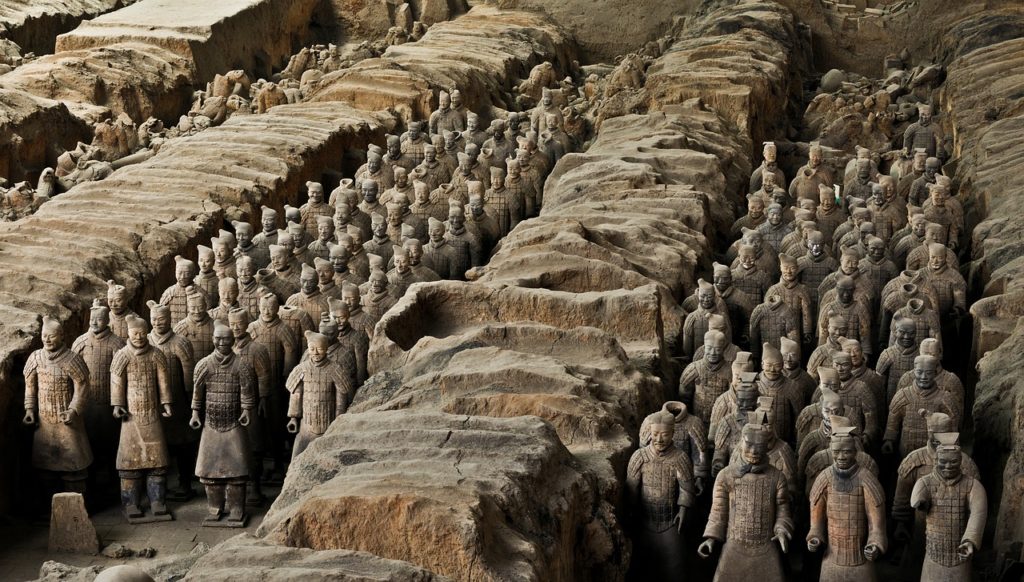Making the Terracotta Army
by Scott Dutfield · 16/09/2019

Meet the immortal warriors built to defend the Chinese Emperor Qin Shi Huang and find out how they were constructed over 2,200 years ago
The Terracotta Army comprises a huge collection of sculptures found within the mausoleum of the first emperor of China, Qin Shi Huang. Featuring close to 9,000 figures, objects and weapons, the massive earthenware cohort was built to accompany Emperor Qin into the afterlife.
The terracotta army was manufactured by thousands of labourers and craftsmen during Qin’s reign around 220-210 BCE. The material used to build the sculptures was harvested from the site of the mausoleum – Mount Li in Shaanxi Province. According to detailed examination of the figures, their heads, arms, legs and torsos were modelled and fired separately, only being assembled afterwards, so many more were probably made but damaged during production.
While today the excavated figures have reverted to their natural orange-red colour due to exposure to the air, when originally completed these sculptures would have been brightly painted and highly detailed – evidence of which can still be found on a few well-preserved specimens. What does remain unchanged is their original layout, with the thousands of statues arranged in accurate military formations, with generals and other important officers identified.
The Terracotta Army is but one feature – albeit the most impressive one to date – of Qin’s larger mausoleum and necropolis, with the emperor’s tomb and underground palace yet to be excavated. According to famous Chinese historian Sima Qian (circa 145-90 BCE), all manner of treasures are concealed there, but the site is considered sacred so there are no immediate plans to disturb the tomb.
Beyond the warriors…
Officials
Qin also needed protection from the trials and tribulations of administration work. Terracotta court officials and counsellors can therefore be found throughout his enormous mausoleum.
Acrobats
In contrast to the sombre and serious terracotta soldiers, other pits within Qin’s mausoleum have revealed acrobats and dancers, each crafted in animated positions and with strong
facial expressions.Musicians
Music was important in Ancient China, which is represented by the abundance of musicians and instruments. A set of Bianzhong bronze chimes was recently unearthed in very good condition.
Animals
Emperor Qin Shi Huang was clearly a big fan of animals, as a host of sacred creatures, such as cranes and swans, as well as a full-blown imperial zoo, have been found inside
the mausoleum.
This article was originally published in How It Works issue 57, written by Rob Jones
For more science and technology articles, pick up the latest copy of How It Works from all good retailers or from our website now. If you have a tablet or smartphone, you can also download the digital version onto your iOS or Android device. To make sure you never miss an issue of How It Works magazine, subscribe today!




